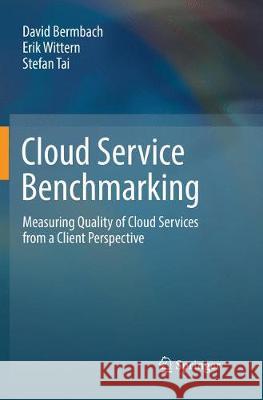Cloud Service Benchmarking: Measuring Quality of Cloud Services from a Client Perspective » książka
topmenu
Cloud Service Benchmarking: Measuring Quality of Cloud Services from a Client Perspective
ISBN-13: 9783319856728 / Angielski / Miękka / 2018 / 167 str.
Cloud Service Benchmarking: Measuring Quality of Cloud Services from a Client Perspective
ISBN-13: 9783319856728 / Angielski / Miękka / 2018 / 167 str.
cena 269,23 zł
(netto: 256,41 VAT: 5%)
Najniższa cena z 30 dni: 267,98 zł
(netto: 256,41 VAT: 5%)
Najniższa cena z 30 dni: 267,98 zł
Termin realizacji zamówienia:
ok. 20 dni roboczych.
ok. 20 dni roboczych.
Darmowa dostawa!
Kategorie:
Kategorie BISAC:
Wydawca:
Springer
Język:
Angielski
ISBN-13:
9783319856728
Rok wydania:
2018
Wydanie:
Softcover Repri
Ilość stron:
167
Waga:
0.27 kg
Wymiary:
23.39 x 15.6 x 0.99
Oprawa:
Miękka
Wolumenów:
01
Dodatkowe informacje:
Wydanie ilustrowane











